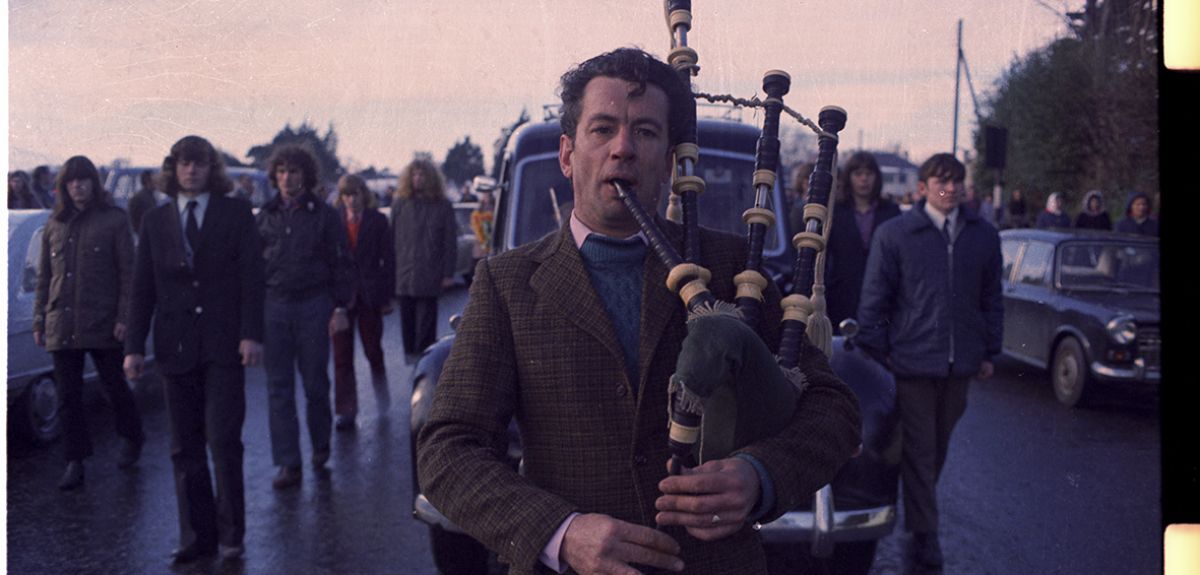
The outbreak of violence in Northern Ireland, 50 years on
By Rachel Kowalski, DPhil candidate in Oxford’s Faculty of History and leader of the Violence Studies network.
This month marks the 50th anniversary of the outbreak of violence in Derry, Northern Ireland, in what has become known as the Battle of the Bogside. The August 1969 riots, involving local communities and the Royal Ulster Constabulary (RUC), are often referenced as the events which marked the beginning of the 30-year conflict commonly known as the Northern Ireland Troubles.
But the stones and petrol bombs thrown on those summer days were not the first sign of intercommunal tension, nor the first violent expressions of discontent. British Army troops has been deployed in the province on internal security duties since April of that year, and recent scholarship suggests there is reason to question previous claims that the RUC’s request for the deployment of troops in August 1969 came as a ‘surprise’ to the General Officer Commanding, Lieutenant General Sir Ian Freeland. Rather, the roots of the conflict were long, the violence was varied and persistent, and its impact was severe and deep.
Between 1969 and 1998, more than 35,000 shooting attacks and 10,000 explosions claimed the lives of over 3,600 individuals, with a further 40,000 suffering horrific or life-altering injuries. It’s not uncommon to see the most high-profile violent events of the conflict referred to in the media or commemorated on an annual basis.
But the conflict was more than the sum of those particularly spectacular or egregious events. The diverse and complex character of the conflict, which spanned decades, cannot be grasped if we reduce the history to its morbid ‘highlights’. The participating paramilitary groups’ motivations, members and activities were as diverse and changing as the various political and security forces’ responses to them, and whole communities were affected as a result. The totality of the resulting harm exceeded that which proved fatal or left visible scars on the bodies of survivors.
This June, the Violence Studies research network (part of TORCH, the Oxford Research Centre in the Humanities) hosted a series of events to examine the Northern Ireland Troubles in light of the 50th anniversary. Among those events were seminars featuring presentations from academics whose research into the early years of the conflict involves consulting previously closed archival materials. Papers from Dr Edward Burke, Dr Simon Prince, Professor Gavin Schaffer and Dr Margaret Scull shed light on a variety of key issues including the role of community support, the media and the Catholic Church.
Those papers reveal the microdynamics of both the perpetration and experience of violence in the early years of the conflict. But it’s the everyday experience of living through conflict that can be hardest to capture. The sources most readily available to scholars of violence – newspapers, security statistics, memoirs and oral histories – naturally tend to skew towards the extremes. And that’s why the multimedia performance of poet and musician Steafán Hanvey, hosted this June alongside the academic paper presentations, was so significant and powerful.
The performance doubled up as the official UK book launch of Hanvey’s father-son photo-poetry book, Reconstructions: the Troubles in Photographs and Words (2019, Merrion Press). The book provides unique insight into a family’s experience of the complex and vivid history of the Troubles, featuring images captured by Hanvey’s father, the renowned Northern Irish photographer Bobbie Hanvey, paired with Hanvey’s own strikingly original and powerfully raw poetry. The work was given life at the launch as Hanvey performed his music and poetry, accompanied by a slideshow of his father’s photographs. The audience gained an insight into how it feels to spend one’s formative years anchored in a conflict zone – Hanvey’s memories of only narrowly escaping harm himself were truly humbling to hear.
Hanvey’s performance of the poem 17 (Cause to Grieve) was particularly powerful. The piece was composed in response to Bobbie Hanvey’s photograph of a father’s salute at the graveside of his daughter, the IRA volunteer Vivienne Fitzsimons, who was ‘killed in action’ in February 1973 alongside a comrade as they transported a bomb. Vivienne lived just around the corner from Steafán Hanvey, who was ‘but seven months old when she left home for the last time’. Hanvey’s words convey both the closeness and distance of their separate paths, and how things could have been very different had he made other choices. But, unlike Vivienne, the only thing Hanvey was sure of at 17 was that he ‘wasn’t sure of anything; the only thing [he] would have died for was a record deal’.
For more on the Northern Ireland Troubles commemorative series by the Violence Studies network, listen to interviews and lecture recordings on the podcast channel Understanding Violence.